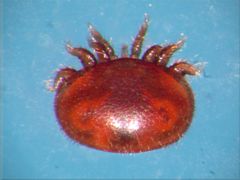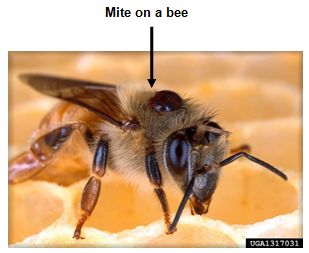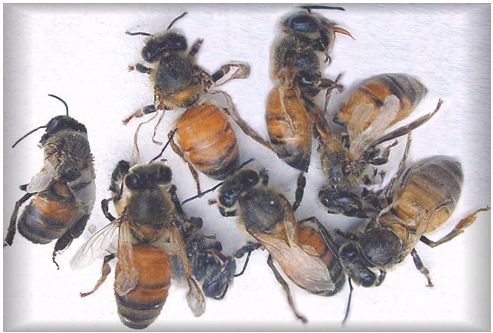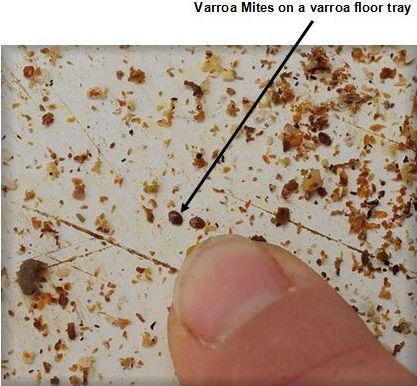As a beekeeper, you have many pests and diseases to watch out for. One which is potentially very serious is the varroa mite. It is now so widespread that if you keep bees, you are almost certain to get varroa mite sooner or later. Although this has still to be proved, it is thought that varroa could be one of the stress factors causing colony collapse disorder (CCD).
Untreated colonies will eventually die out, so once you have varroa, you must take action. Although you can never totally eliminate the varroa mites from your colony, with good beekeeping practice you can keep them at manageable levels.
What exactly is varroa?

Varroa mite
The varroa mite, or Varroa destructor to give it its proper name, is an external parasite of honey bees. They are very small, measuring between 1.1 and 1.7 mm (about 4/100 to 7/100 of an inch), and were originally found on Asian honey bees. Because of the shorter life cycle of this species of bee, the varroa were never able to get above a certain level of infestation, so the mite did not cause serious damage to these bees.

However, when the inevitable happened and the varroa migrated to the Western honey bee, it was not able to cope with the infestation. The Western honey bee does not have the same natural defences as the Asian bee, so once mites get established in a colony, they soon get to levels which can do real damage.
What harm do varroa do?
At low infestation levels, the mites do not really do any harm and the bees can function as normal. But as varroa numbers rise, the colony can be severely damaged and will eventually die out.

Honey bees with deformed wings caused by varroa
Varroa feed on the blood of both developing bees (brood) and adult bees. This weakens the bees, and can lead to deformities in growing brood. The mites also spread harmful pathogens and viruses as they transfer from one bee to another.
What methods are available to treat for varroa?
There are 2 main methods of control – chemical controls, and management methods. Chemical control is basically the use of varroacides, various chemical sprays or treatments designed to kill the mites.
Many beekeepers (particularly hobby beekeepers) are uneasy about using chemicals in their hives. In any case, largely because the chemical methods were overused, varroa are now becoming resistant to the main ingredient (pyrethroids), particularly in the United States, so management methods are really the only option left.
Various management techniques exist to help keep the number of mites to an acceptable level, without the use of chemicals. Natural varroa management methods are more labour intensive, but when used properly can give good results.

One method is the use of open mesh floors, so as the mites fall out of the hive they are unable to return. As they can only survive for a few days without feeding of a bee, the ones that fall out will die.
Another natural mite control method is to dust the bees with icing sugar. This encourages the bees to clean each other, and this extra cleaning will remove a lot of the mites. Combined with the open mesh floors, many beekeepers have had good results with this technique.
For more experienced beekeepers, there are other methods involving the removal of drone brood (which is infested with varroa), or creating an artificial swarm and so leaving the varroa infested brood behind.
Varroa mites are a problem, but do not let this put you off! With good management this parasite can be kept under control, and your bees will thrive.
[All images courtesy www.cornwallhoney.com]

1 comments
I found this article very intresting. It certainly helped me in my project. Thankyou